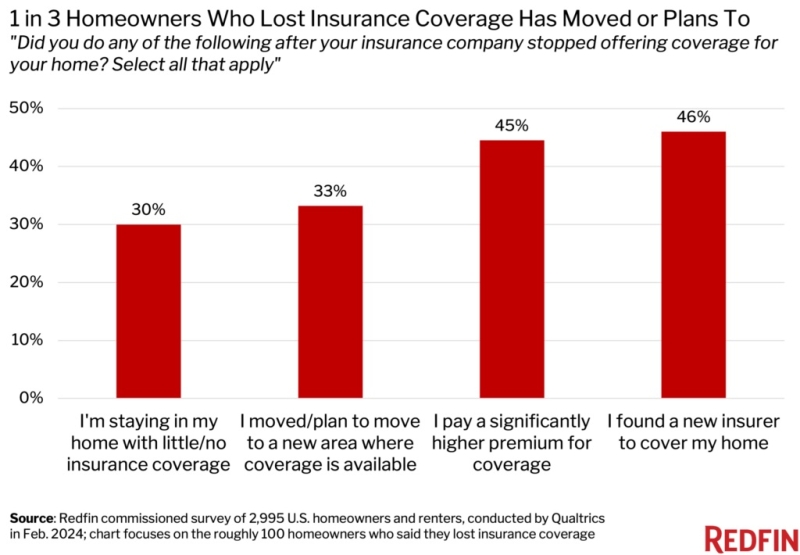Advertisement
Tracing Stagnant Mortgage Apps to Less Affordable Housing
The relative inertia in mortgage applications continued for another week. But in view of new data warning about the evaporation of affordability in the residential property market, one could easily connect the stagnation with mortgage applications and the disappearance of housing inventory that is within financial reach of many middle- and working-class Americans.
According to the Mortgage Bankers Association’s (MBA) Weekly Mortgage Applications Survey for the week ending Aug. 8, the Market Composite Index decreased 2.7 percent on a seasonally adjusted basis and three percent on an unadjusted basis from one week earlier. The seasonally adjusted Purchase Index decreased one percent from one week earlier to the lowest level since February 2014, while the unadjusted Purchase Index decreased two percent compared with the previous week and was 10 percent lower than the same week one year ago. The Refinance Index decreased four percent from the previous week to the lowest level since May 2014, while the refinance share of mortgage activity decreased to 54 percent of total applications from 55 percent the previous week. The adjustable-rate mortgage (ARM) share of activity remained unchanged at eight percent of total applications.
While the MBA’s data does not present a specific cause or effect for the ongoing lack of significant movement in mortgage applications, a potential clue could be found in a report issued last week by RealtyTrac that analyzed affordability for buying a home. RealtyTrac found that as of the second quarter of this year 2014, one-third of the 1,000 counties analyzed by the company surpassed their historical averages for income-to-price affordability percentages since 2000, thus making them less affordable today than they have been on average over the last 14 years.
“Eighty-one percent of the U.S. population lives in markets where the percentage of income needed to purchase a median-priced home is at or below its long-term average,” said Daren Blomquist, vice president at RealtyTrac, who added that “one-third of the counties analyzed–representing 19 percent of the total population in those counties–are now less affordable than their long-term averages.”
One major problem has been the lack of affordable inventory. Jerry Walters, senior vice president and chief operating officer at Tampa-based Olympia Capital Management, noted that many sellers are reluctant to list what could be affordably-priced homes because of a lack of choices on where to go next.
“Actual housing value has yet to see a full recovery,” Walters said. “People in Middle America are afraid to list their houses because they feel they will not find a new house to move into.”
Andy W. Harris, president of Lake Oswego, Ore.-based Vantage Mortgage Group Inc. and treasurer of NAMB—The Association of Mortgage Professionals, agrees with Walters, adding that this situation will not change in the very near future.
“Many have hunkered down and decided to stay put,” Harris commented. “With recovering equity and the stronger appreciation we’ve seen, these homeowners are motivated to sit still and see what happens.”
Yet Logan Mohtashami, an Irvine, Calif.-based senior loan manager at AMC Lending Group and a financial blogger at LoganMohtashami.com, noted that even if these homeowners were willing to sell, a large number of people that could purchase these properties have their own issues to overcome.
“A huge portion of potential buyers are not able to put 20 percent down,” Mohtashami observed. “Whenever you put down less, you have to borrow more. One-third of the market is cash, and about 17 percent of mortgage buyers are the rich. Mainstream American doesn’t have that [capacity].”
Mohtashami added that despite market trends that might suggest a buyer’s bonanza, the overall housing market is not in a happy place.
“Rates have gone lower all year long, inventory is rising, and rents and rising,” Mohtashami continued. “In a normal housing market, that would create demand. But we have negative growth–applications are down 10 percent to 20 percent, sales growth will be negative this year.”
Walters also observed that two additional factors from the post-2008 crash have also driven down the availability of more affordable housing.
“After the bubble, a lot of cash went into buying up affordable housing and turning them into rental properties,” Walters said. “Those houses were taken off the market. And with QM, an increase in rates knocked a lot of people out of the market.”
Harris also pointed to changes made by the Federal Housing Administration (FHA), most notably regarding MIP rates, further exacerbated the issue by making borrowing more expensive.
“Having more affordable loans would play a role in opening the door for many people,” said Mohtashami.
Still, the old adage that all real estate is local can be applied to many markets around the country.
“Texas, in general, is one of the most affordable states,” said Renae Anderson, a real estate agent with Keller Williams Dallas Premier, who noted that the lack of a state income tax helps to keep more money in residents’ pockets. “Many new homebuyers can afford to live here instead of in other states. I can speak from experience, because I’ve lived in California, Virginia and New Mexico.”
While Anderson added that the Lone Star State is not without its housing-related issues–she recalled how investors “swamped” the market and purchased many affordable properties in the post-bubble period–she believed that Texas is still welcoming for many people in search of affordable housing.
“It is not an economic emergency,” Anderson said. “Our lower income families and younger families can still purchase a home here.”
About the author





